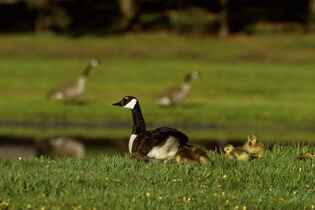 Ask any Golf Course Superintendent what they absolutely hate most especially in states like New Jersey, New York, Massachusetts, and Connecticut and that is Canada Geese! You see whether it is a private country club, a USGA event or some cheap municipal golf course ground crews and club staff spend years trying to get a course to look a certain way. Golf courses are known for their meticulously manicured grounds that often include water hazards and wild grass scenery. Which unfortunately is a beacon and ideal setting for Canada Geese to take residency. It can be quite a job to keep geese off a golf course, or out of the grassy areas near the water at a park. Golf course maintenance crews are kept busy with all they must do to keep the course green and mowed, clean and free from geese and their nasty droppings. Geese are known to forage on the course’s opulent green vegetation and the average goose is responsible for 4 lbs. of droppings a day. Once geese start nesting on your golf course, they will continue to come back year after year, that of course if they migrate at all and do not take up year-round residency. Once they lay their eggs geese will become extremely aggressive protecting their nest and attacking anyone or anything going near it. Do not get it twisted this is not our nursery rhyme mother goose, although not known for their violence, a mother goose will hiss, stomp, and attack golfers that go near their nest. If you happen to be one of many golf courses that have become overrun with geese or simple just have a family of geese eating their way around the buffet known as the 18th fairway Loomacres Wildlife Management has the solutions for you! There are several options for ridding your property of Canadian geese including chemical sprays and landscape redesign, but the most effective method is to use highly trained Border Collies known as goose dogs. These intelligent and energetic animals are taught not to harm the birds, but rather to use their natural intense stare to convince the geese that a predator is lurking nearby. Geese are concerned with survival and will not congregate where a Border Collie is patrolling. Even better, when geese seek refuge in the water, the dogs are very adept at swimming and will not rest until the last goose has fled. To make sure we not only get the job done efficiently but abide by all United States Fish and Wildlife Service guidelines and laws regarding Canada Geese, all our well-trained goose dogs are healthy and strong and have completed a structured program to prepare them for success in the field. A well-trained Goose Control Dog can be very persuading to a flock of Canada Geese, convincing them that a certain location is not really where they want to reside. Our Border Collies are exceptional swimmers and intense herders and that makes them ideal candidates for controlling geese. Additionally, we offer other solutions that when applied with using a boarder collie can prove even more effective:
For more information or to even book a free site visit and demonstration on your golf course please fill out the fields below and someone from Loomacres Wildlife Management will contact you.
2 Comments
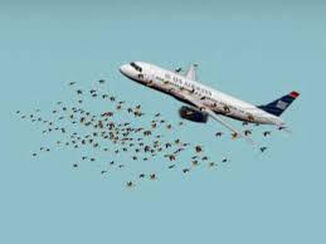 Did you know that all Part 139 airports are required to perform a formal WHMP Review every 12 months? The FAA states that the foundation for these evaluations is not only the documentation of wildlife strikes but the maintenance of consistent records of wildlife surveys and wildlife control activities. Based on the annual evaluation the WHMP should be updated as needed to ensure the information adequately addresses known wildlife hazards. As these changes are adopted, approved, and implemented at the airport, it is of the utmost importance that all documentation is well prepared and available during FAA inspections. This procedure is to assist airport operators in documenting this review, the following sample review forms are provided. One form is for the “annual” review (every 12 consecutive months), and one for a review following a triggering event. These forms represent examples and may be used as provided or modified to suit specific needs to review a Wildlife Hazard Management Plan. Once a Wildlife Hazard Management Plan is in place, it must be evaluated every 12 consecutive months or following a triggering event as per 14 CFR part 139.337(f)(6). Those triggering events are: · An air carrier aircraft experiences multiple wildlife strike · An air carrier aircraft experiences substantial damage from striking wildlife · An air carrier aircraft experiences an engine ingestion of wildlife. During the WHMP review, the airport and the Certified Airport Wildlife Biologist will need to follow the questions listed on the WHMP Review Checklist. Any discussions will be based on the management over the course of the last year. This checklist will cover areas including:
After all of this is completed, an official review will be completed and documented by the conduction Airport Wildlife Biologist. Part 139 airports are required to keep this document on file for further modifications and review. 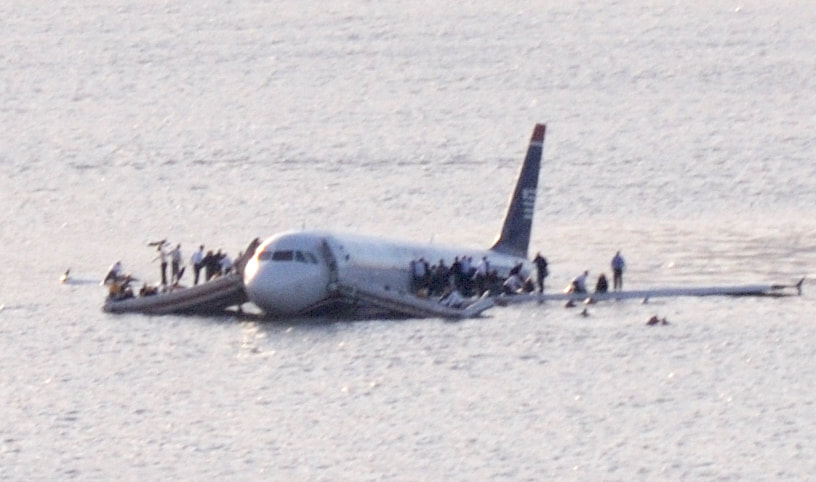 January 15, 2009, US Airways Flight 1549 at 3:27:11 during climbout, the plane struck a flock of Canada geese at an altitude of 2,818 feet (859 m) about 4.5 miles (7.2 km) north-northwest of LaGuardia. The pilots' view was filled with the large birds;[18] passengers and crew heard very loud bangs and saw flames from the engines, followed by silence and an odor of fuel. 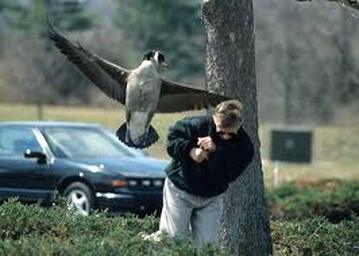 New Jersey you have a problem! Nuisance Resident Geese have taken over your parks, golf courses, and residential ponds and it is becoming a mess. Goose Control is and should remain a high priority for anyone dealing with this spike in bird numbers. Resident Geese numbers have been on the steady rise since 1993 which according to the USDA was right around 40,000 then boomed to 110,000 in the year 2003 and has been slowly increasing year after year. Nuisance wildlife management is the term given to the process of selective removal of problem individuals or populations of specific species of wildlife. Other terms for the field include wildlife damage management, wildlife control, and animal damage control to name a few. Right now, in the State Of New Jersey for example the number of complaints and the demand for wildlife Management is increasing. Most Canada goose damage complaints in New Jersey involve accumulations of feces on lawns and walkways at homes, schools, hospitals, corporate campuses, and public parks. Goose feces damage property, compromise overall quality of life, and have the potential to pose serious health threats due to the presence of disease-causing organisms. Other damage associated with geese includes overgrazing of lawns and recreational fields, and goose aggression and human injury during the nesting season. At Loomacres Wildlife Management we have been fighting the battle against Geese for almost 20 years! By using a wide variety of methods, we can ensure you that your goose problem can be managed. Management of the problems associated with Canada geese requires development of an integrated damage management program that includes a variety of safe, practical, effective, and legal techniques. Nuisance wildlife management is the term given to the process of selective removal of problem individuals or populations of specific species of wildlife. Other terms for the field include wildlife damage management, wildlife control, and animal damage control to name a few. What We Do: This process may sound complicated to some but for us it is simple. Once we have one of our Certified Wildlife Biologist come assess your situation and do a risk management analysis, we can then begin to put together a strategy. Most cases tend to be unique so there is no “silver bullet” or “quick fix” method! There are several different factors that take place like time of year, nearby habitat, food source, etc. Once our Biologist has come up with a Wildlife Hazard Management Plan, we can begin implementing that strategy using either Lethal (depredation) or Non-Lethal tactics such as hazing or habitat management. How We Do It: For needs outside of the regulated hunting season and any other state-specific goose control programs, the U.S. Fish and Wildlife Service issues goose depredation permits to qualifying individuals and municipalities. These permits allow for the removal of geese, typically 1-2 per day, but must be done in conjunction with active non-lethal methods. Please see Federal Migratory Bird Depredation Permit for information and the permit form. If the need for Lethal Goose Control is in order Loomacres will obtain all necessary permits on behalf of our client. For those cases that require Non-Lethal Goose Management Methods we at Loomacres Wildlife Management use an arsenal of techniques listed below.
If you are currently experiencing a problem with Nuissance Geese wreaking havoc on your ponds, parks, lawns, or they are in a place where they shouldn’t be please fill out the contact information below and Loomacres Wildlife Management will be in contact with you shortly.  Without a doubt the Covid-19 Pandemic changed the landscape of all business in the United States. Technology was used more than ever with essentially everyone using zoom meetings, go to meetings, and virtual workplaces. Garages and basements turned into offices and closets turned into break rooms! After speaking with several leaders in the Wildlife Damage Management community one thing that was apparent was how much the landscape of the industry changed. Annual conferences that we used to attend became awkward virtual unorganized online meetings, less interactions with lifelong customers, and restricted travel. However, one good thing that came out of it was the FAA allowing Certified Airport Wildlife Biologist to conduct Wildlife Hazard Management Training remotely to fulfill the mandated Part 139 Airport Certification and stay in compliance. The FAA requires airports and airport staff to comply with 8 hours of training and education every year. Loomacres Wildlife Management conducts these seminars and educational courses to instruct airport personnel to proper identification and management of wildlife on their airport. These Wildlife Hazard Management and Wildlife Identification courses checks all the requirement boxes that the FAA requires and now you can do it from a computer screen. All trainings are still taught by one of our Certified Airport Wildlife Biologist that will customize the webinar according to your airports Wildlife Hazard Management Plan and specific risk history. Imagine this scenario, you just hire a new staff member to service or carry out your Wildlife Hazard Management Plan. But you have already had your 8 Hour mandated training. What do you? Do you book another one, or send that employee to a training and pay for hotel, mileage, and food? Not anymore, you simply register that employee for a virtual training session and their certificates will be in the mail! One of the issues we saw in this transition however is most airport personnel operates on 12 hour shifts that can compliments everyone being on a training webinar at the same time. Quick fix though seeing as these trainings are online, they can attend anywhere, anytime, and still complete the requirements set forth by the FAA and the USFWS. Below is a list of topics covered in your customized virtual training program.
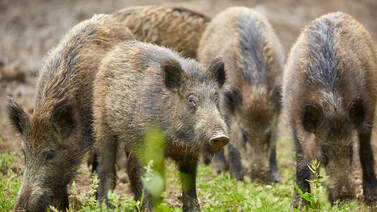 Feral pigs or wild boar to some are becoming a rising problem for airports and airport managers who are responsible and held accountable for providing a safe and wildlife risk free runway for planes arriving and departing. Feral pigs which are one of the most invasive species here in the United States but are wreaking havoc worldwide. Hunters, Wildlife Biologists, and the Government Agencies have been ramping up efforts to get the population in check to reduce the number of costly accidents and crop devastation. estimates there are at least 6 million feral swine spread throughout some 35 states. They have been a particularly virulent problem throughout the south, especially in Texas, where their incessant rooting and voracious eating destroy crops, erode soil and uproot tree seedlings, causing deforestation. They also carry disease like pseudorabies and swine brucellosis. The U.S.D.A. estimates, conservatively, that invasive swine cause upward of $1.5 billion in damage annually to all manner of agriculture, including rice, corn, and grains. But what about airports? Here are a few stories where pigs have cost the aviation industries a substantial amount of money and airfield damages. An Etihad Airways Airbus A320 in January of 2020 collided with a wild boar when landing in the capital of Pakistan. The Aviation Herald reports that registration A6-EII was performing flight EY-233 from Abu Dhabi. However, as it touched down on the runway at Islamabad Airport, the crew noticed that the plane had hit an animal. The plane did not seem to be too affected by the collision as it continued to roll out and taxi onto the apron. Thereafter, staff went to see what happened when A320-200 was landing. While observing the ground, a wild boar was found lying on the runway. In 1988 at Jacksonville International Airport Lt. Col. Sam Carter was rolling down the runway at 160 mph after landing when saw ″a brown blur″ and felt a bump before his Air National Guard jet veered toward a ditch and a stand of pines. A pair of wild pigs that wandered off course got hit by an F-16 fighter, forcing the pilot to eject as the jet veered off a runway and crash. Carter who was forced to eject from the jet before it collided with the nearby woods! This incident destroyed a $16 million dollar jet. In 2008 at the Will Rodgers World Airport outside Oklahoma City, Oklahoma, a group of feral hogs had been digging under the airport fence and eventually broke through wondering around the airfield at night. The airport has a wildlife mitigation team with biologists from the United States Department of Agriculture. Those biologists had been tracking the hog for several days. In the end the pigs had caused enough damage to the airfield and the fence that biologist had to shoot them because they kept coming back. Want to talk about severe long-term damage ask Williston Municipal Airport’s historic grass runway. The grass runway, spanning 2,600 feet, had been closed to the public for about a year, but not to the hogs. Since World War II, the runway has been open on and off. Despite local efforts, wild hog damage and maintenance issues are preventing the runway from getting approved by the Federal Aviation Administration. Without the FAA’s blessing, if an accident were to happen on the grass runway, the city would be held liable. Damage from the feral hog infestation added another hurdle to seeking federal approval. Clearly these are just a few examples and there are many more all over the world. Here in the United States as this invasive species continues to grow in numbers and the risk of more planes colliding with them on the rise, its easy to see why Feral Pig Management is in high demand. 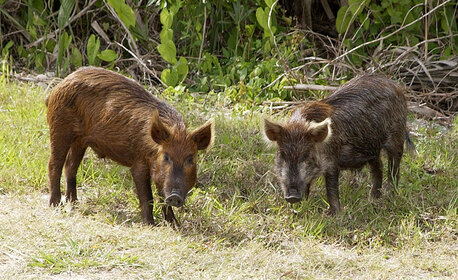 Ferel Pig Ferel Pig Invasive species typically thrive in a new environment for two reasons. When an animal, fish, insect, or plant is taken out of its original ecosystem and introduced to a new one—whether by accident or on purpose; it is less likely to have any natural predator so there is nothing to keep their population in check. Second without a predator in place, open the flood gates for breeding! Typically, invasive species are prolific breeders due to ideal habitat and next to no hunting predation pressure. They can destroy native plants, gobble up native animal populations and introduce disease, upending the delicate balance of organisms that provide food or support for each other, or provide a check on each other’s growth. Extinctions have proliferated. Our human thumb print on this planet and especially the United States has absolutely fueled some of the greatest failures to regional and local ecosystems around the country. By releasing pet snakes in the Everglades National Park to a Shakespeare fan (true story) taking his love for a poet too far, we have without a doubt been careless and irresponsible with our actions. Here is a list of some of the most hazardous invasive species we seemingly have no solution for in the Unites States.
|
Sales & Marketing
|
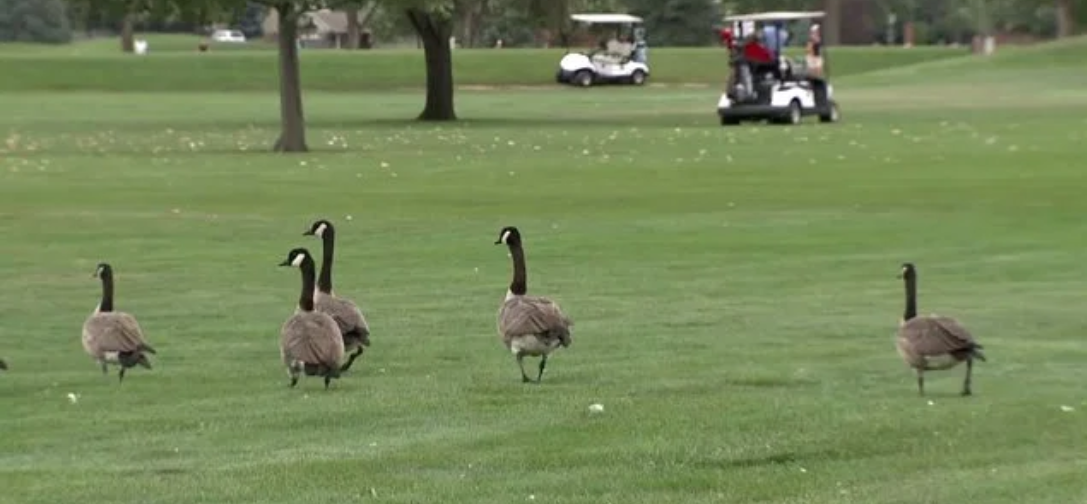
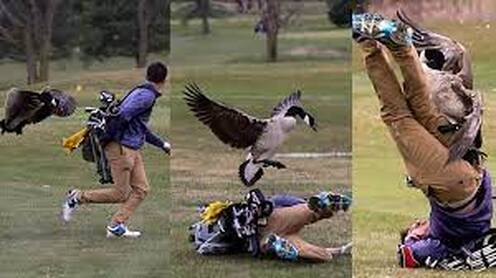
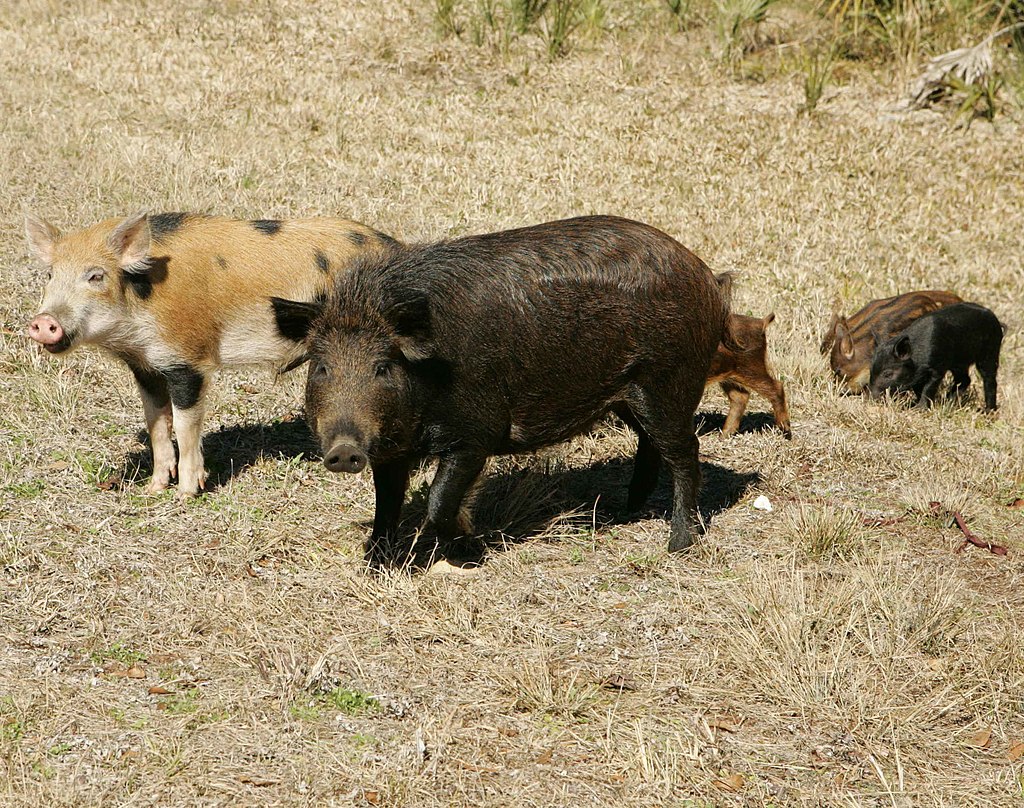
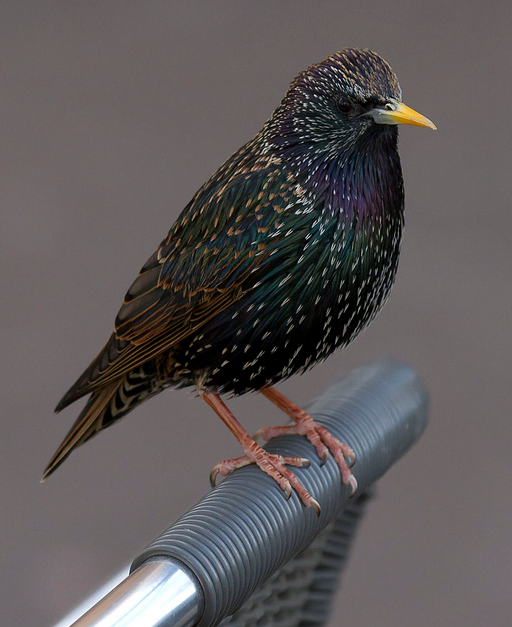
 RSS Feed
RSS Feed